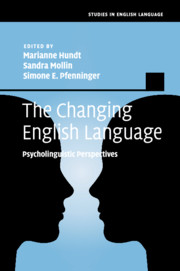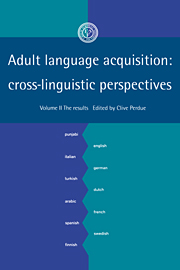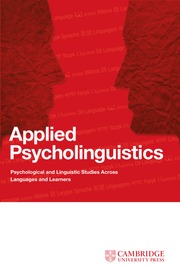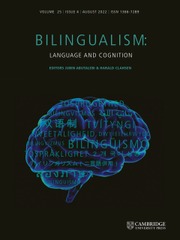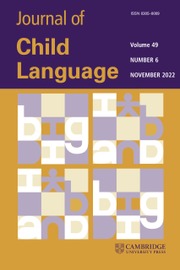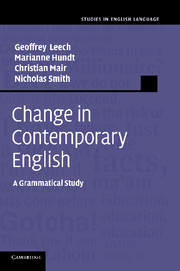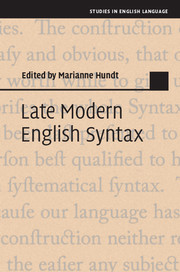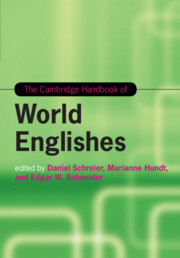The Changing English Language
Bringing together experts from both historical linguistics and psychology, this volume addresses core factors in language change from the perspectives of both fields. It explores the potential (and limitations) of such an interdisciplinary approach, covering the following factors: frequency, salience, chunking, priming, analogy, ambiguity and acquisition. Easily accessible, the book features chapters by psycholinguists presenting cutting edge research on core factors and processes and develops a model of how this may be involved in language change. Each chapter is complemented with one or several case study in the history of the English language in which the psycholinguistic factor in question may be argued to have played a decisive role. Thus, for the first time, a single volume provides a platform for an integrated exchange between psycholinguistics and historical linguistics on the question of how language changes over time.
- Integrates, for the first time, psycholinguistics and historical linguistics, written by experts in both fields
- Readers from both disciplines are able to appreciate the potential of the respective fields for their own research, whilst acquiring a better grasp of the limitations of the interdisciplinary approach
- Detailed information on factors in language change from a psycholinguistic perspective are provided in one single volume
Reviews & endorsements
'This innovative collection sketches what a long overdue cooperation of psycholinguistics and language change could look like. By systematically investigating key psycholinguistic factors from both perspectives, it closes a striking gap in historical linguistics.' Lieselotte Anderwald, Christian-Albrechts-Universität zu Kiel
'This is an admirable example of how a sophisticated analysis of a narrowly defined and partly even invisible phenomenon can reveal deep insights into language acquisition, with wide-ranging consequences for syntactic theory. As such, it is also a demonstration of how acquisition research can inform grammatical theory. Beautifully written, this book is therefore highly recommended to a readership not only interested in language acquisition but also in syntactic theory.' Jürgen Meisel, Universität Hamburg
'Each chapter in this book provides many research ideas for different scholars in any linguistics field like corpus linguistics, psycholinguistics, TESOL, etc. both theoretically and empirically. These research ideas can help flourish these two disciplines much better and establish a fully interdisciplinary field.' Pouya Vakili, LINGUIST List
Product details
June 2017Adobe eBook Reader
9781108234481
0 pages
26 b/w illus. 24 tables
This ISBN is for an eBook version which is distributed on our behalf by a third party.
Table of Contents
- 1. Introduction: language history meets psychology Marianne Hundt, Sandra Mollin and Simone E. Pfenninger
- Part I. Frequency:
- 2. The Ecclesiastes principle in language change Harald Baayen, Fabian Tomaschek, Susanne Gahl and Michael Ramscar
- 3. Frequencies in diachronic corpora and knowledge of language Martin Hilpert
- Part II. Salience:
- 4. Salience in language usage, learning, and change Nick C. Ellis
- 5. Low salience as an enabling factor in morphosyntactic change Elizabeth C. Traugott
- Part III. Chunking:
- 6. Chunking in language usage, learning, and change: I don't know Nick C. Ellis
- 7. Chunking and changes in compositionality in context Joan L. Bybee and Carol Lynn Moder
- Part IV. Priming:
- 8. Priming and language change Martin J. Pickering and Simon Garrod
- 9. From priming and processing to frequency effects and grammaticalisation? Contracted semi-modals in present-day English Christian Mair
- Part V. Analogy:
- 10. The role of analogy in language processing and acquisition Heike Behrens
- 11. The role of analogy in language change: supporting constructions Hendrik de Smet and Olga Fischer
- Part VI. Ambiguity:
- 12. Syntactic ambiguity in real-time language processing and diachronic change Claudia Felser
- 13. Ambiguity and vagueness in historical change David Denison
- Part VII. Acquisition and Transmission:
- 14. Developing language from usage: explaining errors Elena V. M. Lieven
- 15. Transferring insights from child language acquisition to diachronic change (and vice versa) María José López-Cous.

